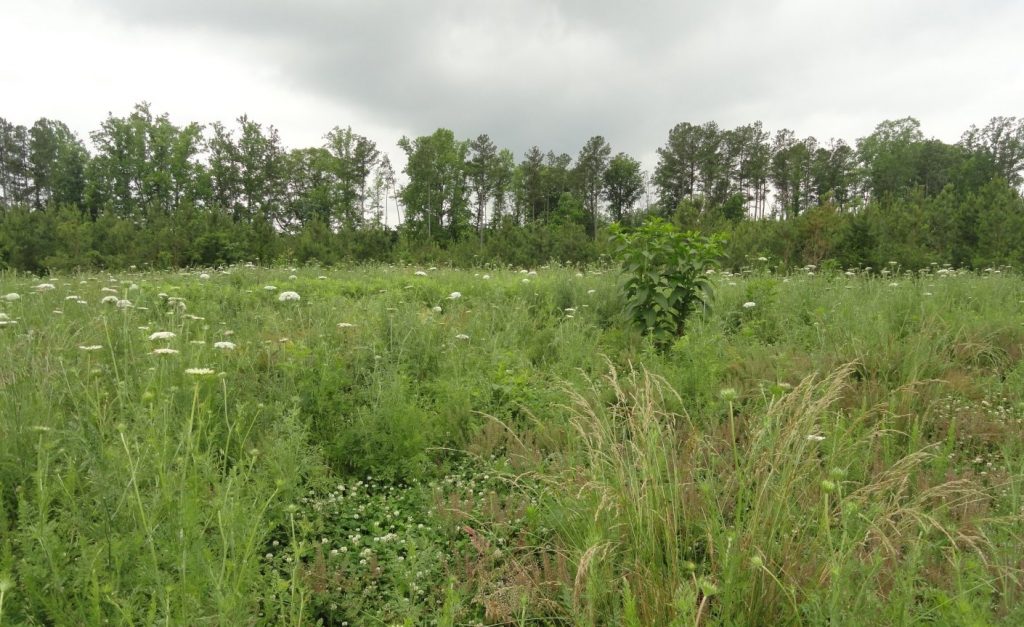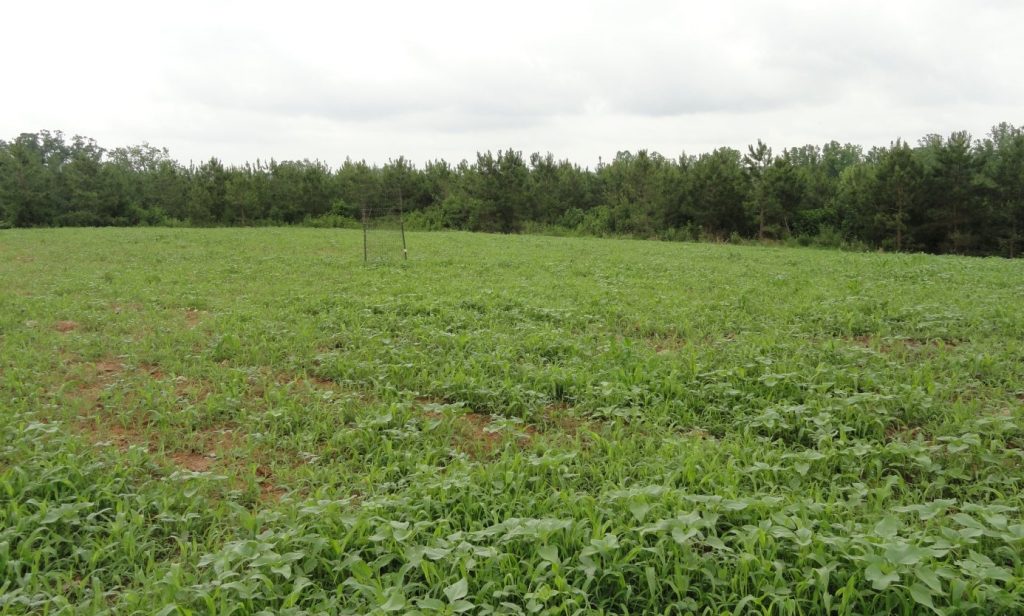Bioenergy is part of any energy solution, but it is not THE solution and the idea that bioenergy will soon make a large part of the American fuel mix probably violates the laws of physics and certainly is not justified by our levels of technology or economics.
Oil and gas are forms of bioenergy; they are just the fossil forms. Although when we say bioenergy, we almost never mean oil, gas or coal, remembering their ultimate origin helps understand the challenge of bioenergy today. Coal, gas & oil were once living organisms. For millions of growing seasons, ancient forests laid down these carbon-based energy riches. There is a geological period in deep time called the Carboniferous, because so many of our coal resources were laid down during it roughly sixty million. During this period, vast tropical rain forests expanded and then collapsed due to rapid climate change. This one period and there are many more millions of years.
When we are producing bioenergy today, we are using the product of one growing season, or at most that of dozens in the case of wood. You can see how our ephemeral efforts seem feeble in comparison to the millions of years and many trillions of life forms that produced the fossil fuels. Gasoline from fossil fuels is a superb liquid energy source that gives us more energy per gallon than almost anything else. A gallon of ethanol yields only around 80% of the energy of a gallon of gasoline. A pound of hydrogen contains much more energy than a pound of gasoline, but hydrogen weighs less than air and a pound of hydrogen takes up more than ten times as much space as a pound of gasoline. Even with its greater energy output, a gallon of hydrogen produces only a little more than 25% as much as a gallon of gasoline.
I digress into the geological and physical facts because I enjoy such things and also to explain the origins and weaknesses of biofuels that are often overlooked. To continue with the mainstream article …
There are many varieties of bioenergies. GMOs promise to deliver biodiesel & other forms of energy from many varieties of plants. We can already produce fuels from things like oil seeds and palm oil. Some of these things have significant ecological costs. For example, rain forests are sometimes removed to plant oil palm. These things can add more greenhouse gases than they remove.
In the profound understanding that yesterday’s solutions are today’s problems, we should be careful, understanding that some of today’s solutions will be tomorrow’s problems.
The most promising bioenergy that might replace petroleum is not really bioenergy at all, but rather is a byproduct. Much of our modern industrial society is petroleum based and much of that is not the stuff we burn. Plastics, drugs, fertilizers and many composites even the paving on our streets is petroleum based. We could replace liquid petroleum fuel a lot easier than we could do without many of these petroleum based products. But when we recall that petroleum is a biofuel, we can see that we could use bioenergy production to replace petroleum in many of these uses. In fact, Middle Eastern potentates feel more acutely threatened by developments in alternative materials than they do the development of alternative fuels. As long as we need the “byproducts” production of oil etc is assured.
The most famous liquid bioenergy is ethanol. Ethanol is criticized because its production can be inefficient (i.e. consume as fossil fuel as it replaces) and the feedstock is usually some form of food and/or the production of the crop for ethanol displaces a food crop.
The first criticism can be valid. You can make ethanol from almost anything that grows in the earth, but some are less efficient than others. You have to look at the precise circumstances. The idea that it displaces food production is one of those things that make intuitive sense, but it not true.
The displacement argument is based on a zero sum thinking that is rarely valid. A modern diversified agriculture produces a variety of crops in a variety of ways. These crops can complement each other and allow greater productivity. For example, some farmers plant sugarcane (a multiyear crop) followed by corn and then by soybeans. One crop enriches the soil for the others. It also can make sense to intersperse crops. In any case, the U.S. has produced more food and feed in the last five years than in the previous twenty while simultaneously producing a bumper crops for biofuels. It works on the small scale as well. Poor farmers in Tanzania, for example, have had success in producing cassava and sunflowers, used in bioenergy along with the crops they eat. Production in general has increased, while addressing the problem of persistent energy poverty.
Biofuel is not the same as bioenergy, which is a broader term. This is clear in the production of ethanol. Ethanol production from sugar cane is very efficient because of the energy potential of the feedstock itself, but also because of the usefulness of the “waste” i.e. the stalks called bagasse. Burning these residues produces enough energy to completely fuel the ethanol production plus surplus energy that can be fed into the national grids. (In 2010, the EPA designated Brazilian sugarcane ethanol as an advanced biofuel due to its 61% reduction of total life cycle greenhouse gas emissions, including direct indirect land use change emissions.)
All new Brazilian vehicles are flex fuel and Brazilians consumers have the choice of ethanol or gasoline at the pump. They make choices based on the relative prices. When the price of ethanol moves above 80% that of gas, they buy gas. Ethanol prices have been high in recent months and so Brazilian drivers have been opting more and more for gasoline, while Brazil, somewhat ironically, has been importing ethanol from the United States. The United States is both the world’s biggest consumer and producer of ethanol. Brazil is second; between our two countries we account for 87.8% of total world production. Brazil and the United States partnered to share techniques and technologies among themselves and with developing countries in the Caribbean and Africa.
The Holy Grail of ethanol production is ethanol from cellulose, i.e. wood chips, corn husks, switchgrass etc. President Bush mentioned this as a goal in his State of the Union speech in 2006. President Obama has reiterated this pledge. Presidents, BTW, have been making similar pledges on various technologies since Richard Nixon. Anyway, they always say the technology will be available about 5-10 years from the time of the speech. It is a good round number that allows them to take credit but largely be out of the way when it doesn’t happen.
IMO, biofuels will never come close to replacing petroleum as a liquid fuel source. The science is still not available, but as importantly it lacks practical or economic sense. Cellulose is common in farm and forestry wastes and is “available” as a feed stock, but it also has other characteristics. Most notably, cellulose waste is bulking, heavy and it tends to burn well. It will never make practical sense to move all this stuff to factories to be turned into ethanol, a process which will produce relatively little energy in return for the massive input. The most useful alternative is what the Brazilians already do with bagasse and what many pulp, paper and wood mills do with their sawdust and scraps: burn them on site to produce electricity. This is a good use if we remember the more inclusive word bioenergy instead of the narrower biofuel.
This woody biomass is a vastly underutilized bioenergy source. If we use electric cars, it would be good if the electricity is produced from a carbon neutral source such as woody biomass. Why take the expensive and less effective extra step of turning it into ethanol?
Anyway, I see bioenergy as an important part of future energy portfolios, but never anything close to a really major solution. We just do not have enough land to produce enough biofuel for even a small percentage of our vehicles. On the other hand, bioenergy and byproducts can form an important part of materials we use and additives in other products. For example, using ethanol as an oxygenator in gasoline makes a lot of sense – burning the stuff in pure form, not so much.
In an uncertain world, you have to try all of the above with a wide portfolio of solutions … and be ready to be flexible when some of your favorites don’t work.









































